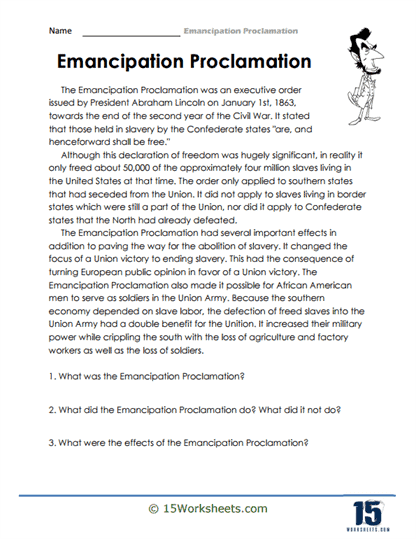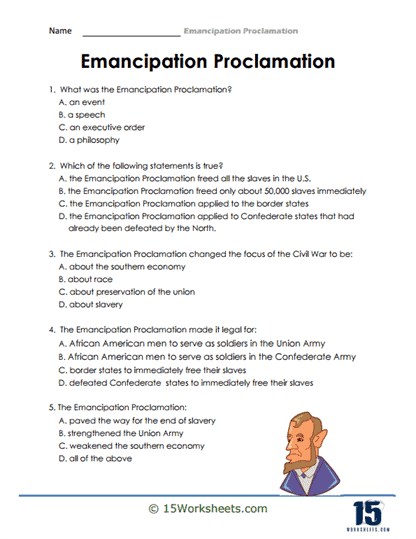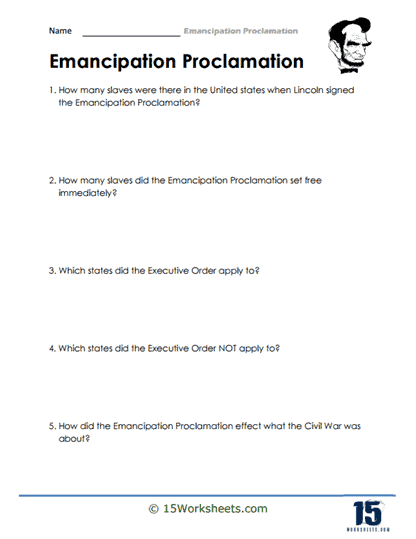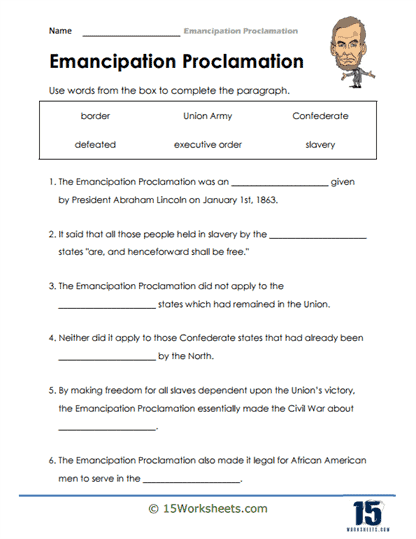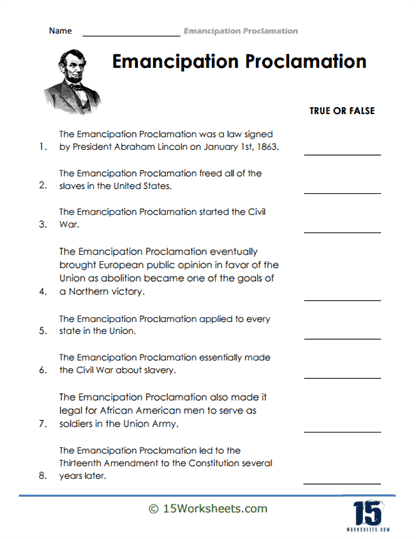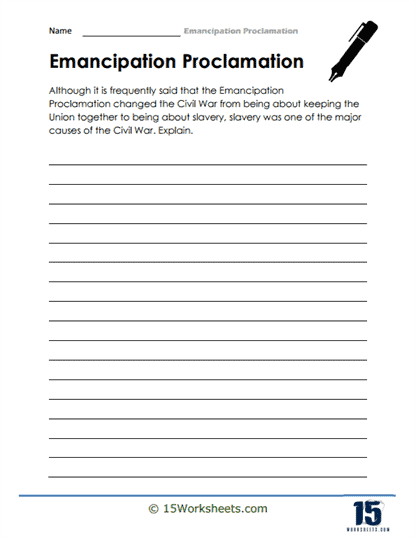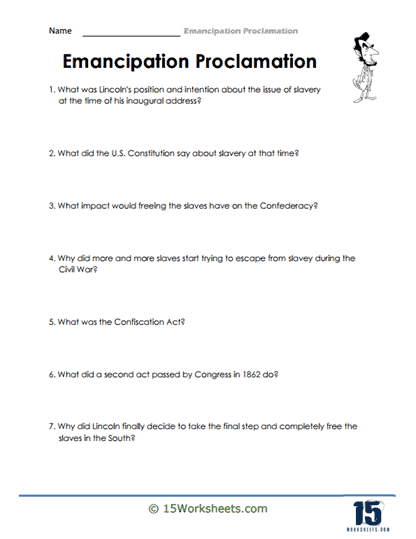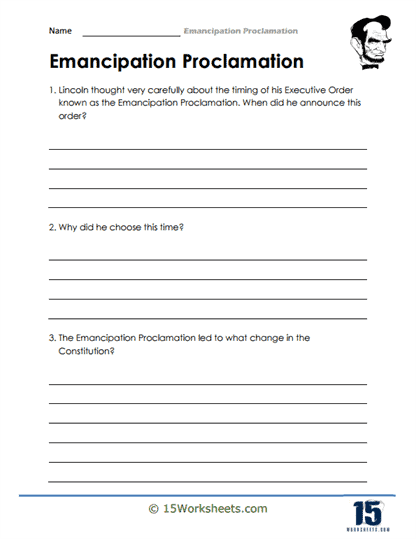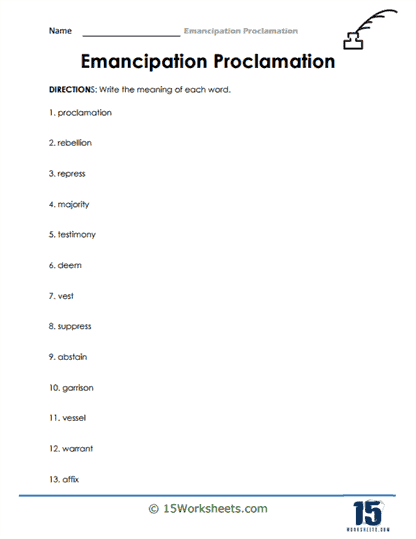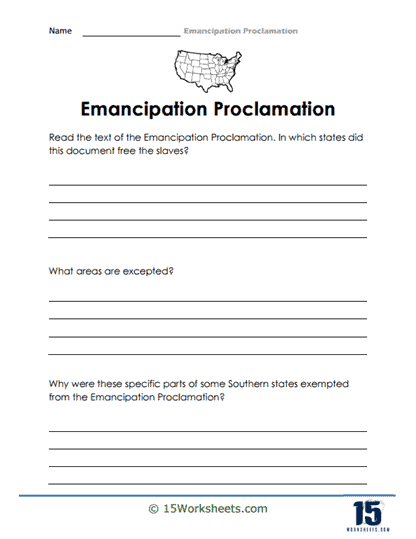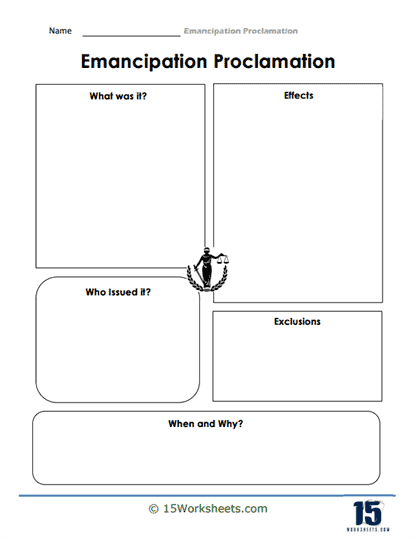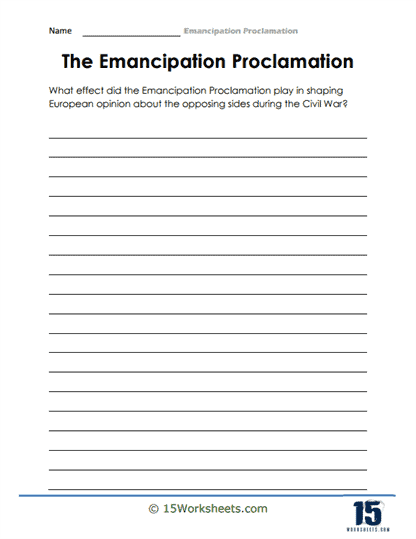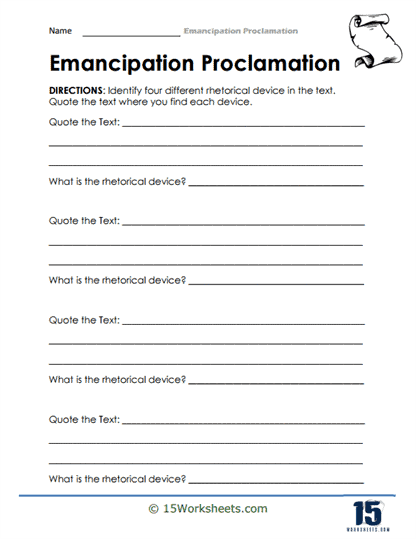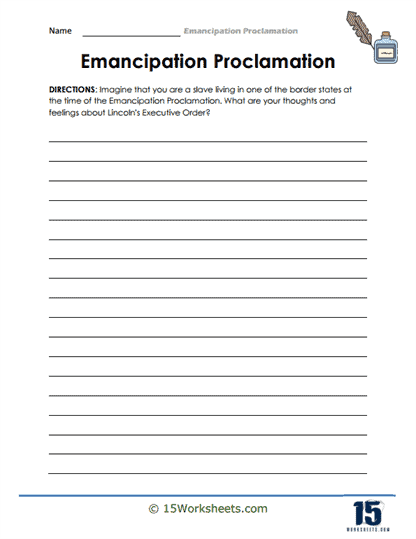Emancipation Proclamation Worksheets
All About These 15 Worksheets
Students go through a profound exploration of one of the most significant moments in American history with this comprehensive series of 15 worksheets on the Emancipation Proclamation. This collection is designed to immerse them in the historical context, significance, and lasting impact of this groundbreaking executive order issued by President Abraham Lincoln. Through engaging activities and thought-provoking exercises, students will gain a deeper understanding of the Emancipation Proclamation, its role in the abolition of slavery, and its implications for the United States and the Civil War.
A Look At These Worksheets
The Emancipation Proclamation may be just a few pages long, but the worksheets in this collection make it feel like a whole world waiting to be explored-and occasionally laughed at. These activities go far beyond rote memorization; they invite students to step into the shoes (and stovepipe hat) of Abraham Lincoln himself, asking not only what the Proclamation was, but why it mattered, how it was written, and what happened next. With a little humor and a lot of historical weight, this worksheet series brings the Proclamation to life.
To lay the groundwork, worksheets like “The Emancipation Proclamation” and “Historical Context” focus on the background noise of the era-war drums, political pressure, and public opinion swirling like a storm. Students dig into the circumstances that led to Lincoln’s bold move, asking questions like, “Was this about morals, military strategy, or both?” Expect timelines, source analysis, and a lot of “wait, he did what in the middle of a war?” moments. This is where the stage is set, and the curtain rises on one of the most pivotal acts in American history.
Once students understand the setting, it’s time to put on their rhetorical monocles and dive into the words themselves. “Use of Rhetorical Devices,” “Lincoln’s Thoughts,” and “Emancipation Proclamation Breakdown” turn students into textual archaeologists. They examine the language Lincoln used-his cadence, his repetition, his moral weight-and ask how he managed to change history with just a few carefully placed clauses. Lincoln isn’t just a president here; he’s a wordsmith under pressure. And with the “Breakdown” worksheet, students dismantle the Proclamation like a watchmaker examining gears-tiny phrases powering monumental change.
But before anyone gets too poetic, it’s time for vocabulary drills-yes, even Lincoln had to know what “emancipate” meant. “Emancipation Proclamation Vocabulary” (twice, no less) and “The Pivotal Document” help students master the terminology. They connect big ideas to precise language, reinforcing how words can shape action. In these exercises, students aren’t just learning definitions-they’re learning how legal and political documents use language as a tool, a shield, and sometimes a sword. These activities ground the lofty ideals in the language that made them real.
Next come the ethical brain-twisters and perspective shifts. In “Objectives” and “True or False Implications,” students test what they think they know. Did the Proclamation actually free all the slaves? (Spoiler: no.) Was it purely moral, or also tactical? (Spoiler: both.) Then, worksheets like “Different Perspectives,” “Internal Conflict,” and “Immediate Aftermath” go deeper, asking students to think like Union generals, Southern civilians, and newly freed people. It’s an empathy gym-mental gymnastics meet moral reflection-and it gets students asking tough, thoughtful questions that can’t be answered with a simple yes or no.
The series closes with the big picture. “Monumental Decision” and “The Pivotal Document” push students to reflect on legacy-how the Emancipation Proclamation echoed through time, and what it still means today. These aren’t just worksheets; they’re mirrors, asking students to consider how historical decisions ripple outward. One might imagine a final writing prompt asking, “What would your proclamation be?”-a chance for students to apply what they’ve learned to the world they live in now. Because in the end, these worksheets don’t just teach history-they ask students to shape their own.
What Was the Emancipation Proclamation?
The Emancipation Proclamation was an executive order issued by President Abraham Lincoln during the American Civil War on January 1, 1863. The proclamation declared that all enslaved people in the Confederate states that were still in rebellion against the United States were to be set free. It should be noted that the Emancipation Proclamation did not immediately free all enslaved people in the United States, as it only applied to the Confederate states and not to the border states that remained loyal to the Union or areas within the Confederacy that were already under Union control.
The Emancipation Proclamation had several significant effects. First, it redefined the purpose of the Civil War, making the abolition of slavery an explicit goal of the Union’s war effort, in addition to preserving the United States as a unified nation. This shift helped to prevent foreign powers, particularly Great Britain and France, from intervening in the conflict on behalf of the Confederacy, as both countries had already abolished slavery and would not want to support a cause that was now explicitly tied to its continuation.
Second, the proclamation had a profound impact on the enslaved population in the Confederate states, inspiring many to escape and seek refuge behind Union lines. As the Union army advanced into Confederate territory, these formerly enslaved individuals often assisted the Union war effort by providing valuable intelligence, labor, and even military service.
Finally, the Emancipation Proclamation paved the way for the eventual abolition of slavery throughout the United States with the passage of the 13th Amendment to the Constitution in 1865. The proclamation was a crucial step in the long struggle for civil rights and equality in the United States, marking an important milestone in the fight against slavery and racial injustice.

